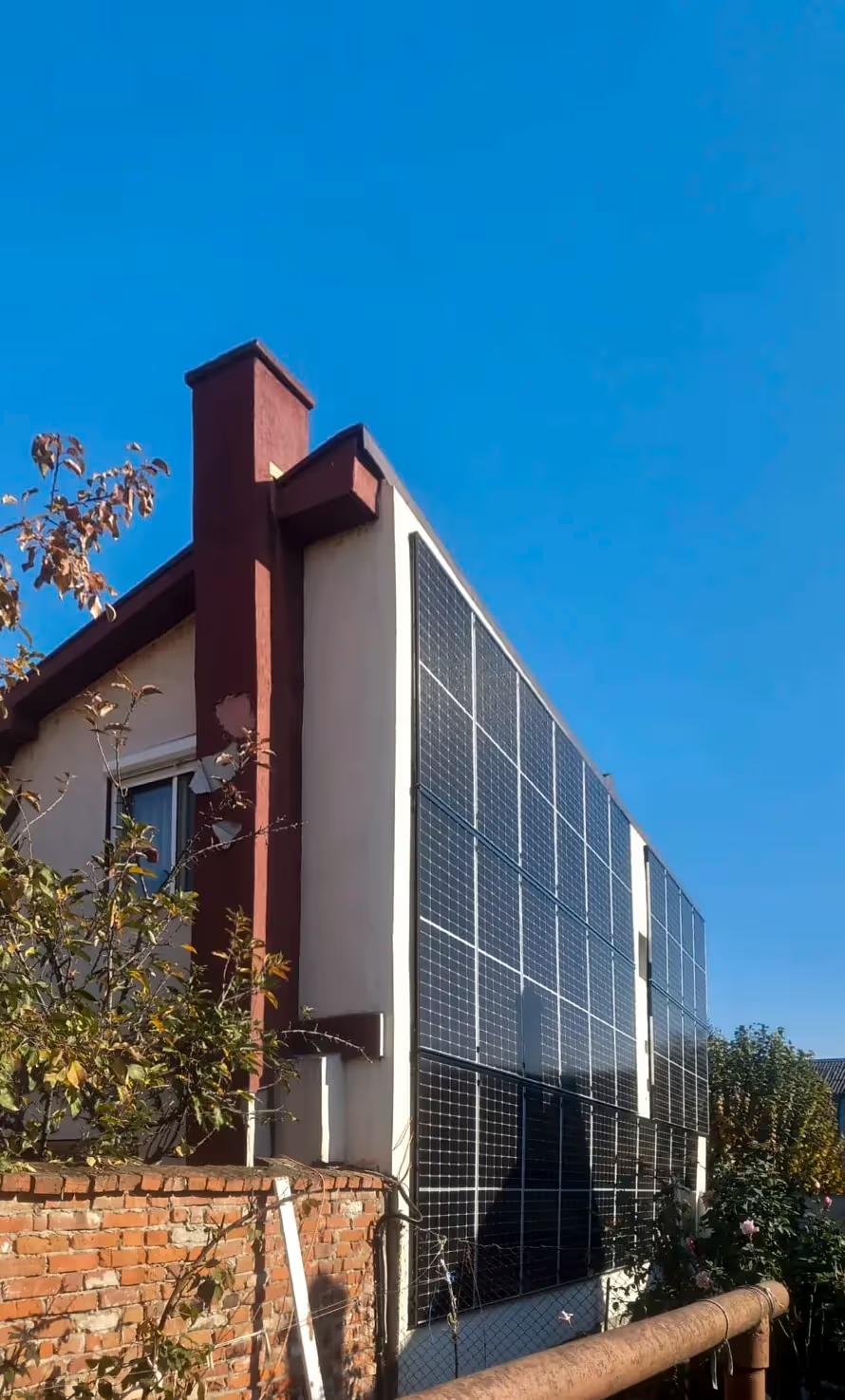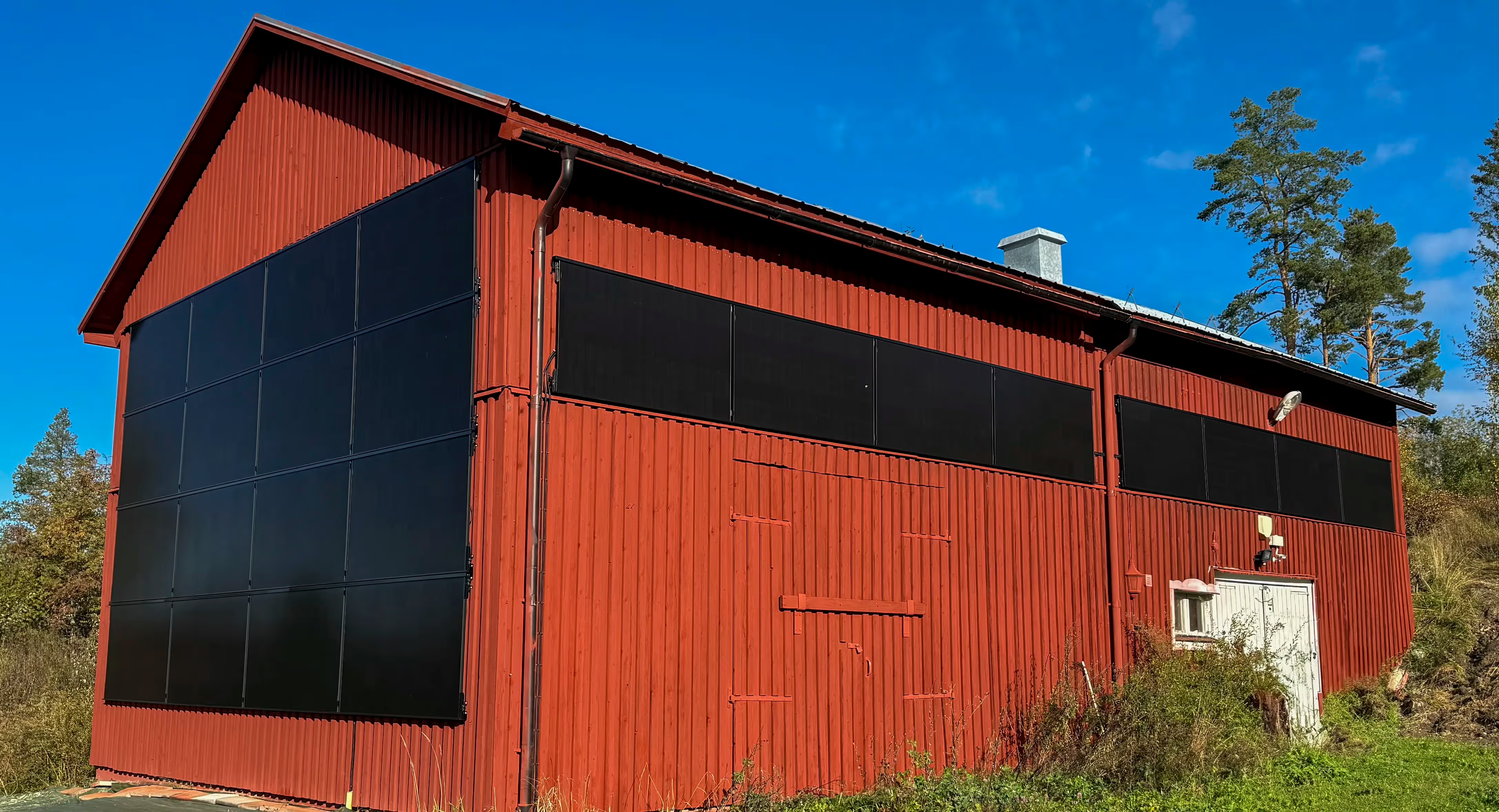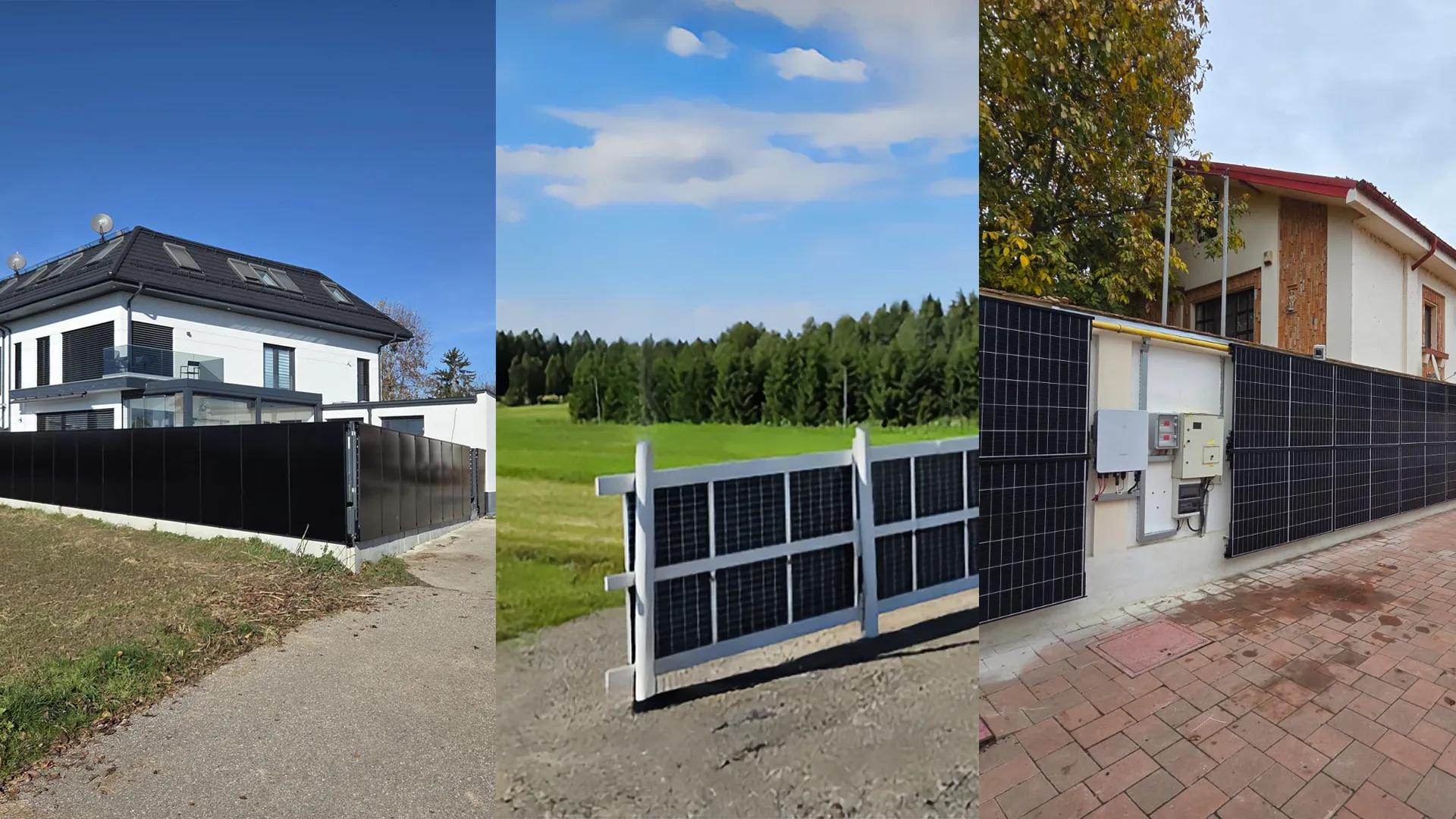Solar panels on a house wall
Installing solar panels on large commercial buildings is becoming more common, and for good reason. On a south-facing wall, solar panels can produce about the same amount of electricity as an east-west system on a roof. Vertically installed panels also produce electricity in winter when the sun is low in the sky.
When it comes to single-family houses, opinions are still divided. In this article, I will try to answer the most common questions and concerns as clearly as possible.


“Solar panels on the wall look ugly and ruin the house’s appearance!”
Let’s be honest, this is a matter of taste. What looks stylish to one person may look unpleasant to another. When people imagine solar panels on house walls, they often think of single panels that stick out sharply from the facade. Most of us would agree that this kind of installation does not improve the house’s appearance.
I recommend looking at solar panels not only as an energy source but also as a design element. Could the panels actually make your house look better or highlight its features? Solar panels have developed a lot in recent years, both in performance and looks. For example, fully black AIKO panels combined with the black RAULI WALL mounting system create a beautiful and modern result.
RAULI products are made from Nordic high-strength steel, which can be painted in any color. FuturaSun offers colored solar panels, and when combined with a RAULI WALL painted in the same color, the result is very elegant.
You can also mix colors. In some projects, we have installed black panels and used a different color for the edge to create a stylish contrast.
“Wall-mounted panels do not produce enough electricity!”
This is one of the most common concerns among homeowners. The good news is that wall-mounted panels can generate plenty of electricity.
Of course, a panel installed vertically will not produce as much as a panel placed at the optimal angle, but in real-life installation conditions are rarely perfect. Often, wall installation is chosen because it is the only south-facing surface available.
How much can wall-mounted panels produce? In the Skandinavia, panels on a south-facing wall can produce about the same annual electricity as an east-west system on a roof. In Central Europe, such as in Germany, the east-west roof setup may produce about 10-15% more per year.
A clear advantage of wall installation is its better energy production when the sun is low in the sky, such as during the first and last months of the year. This is especially valuable in the Nordic countries, where energy consumption is high for heating and any solar power produced during the coldest months is very welcome.

“The wall cannot carry the weight of the panels.”
This is not true. House walls can easily handle the weight of solar panels.
The RAULI WALL system is designed to be simple and safe. The main components, top and bottom elements, have fixing points every 30 millimeters, allowing secure and strong installation on all wall materials.
The most important thing, whether it is a small house or a large building, is to check the type of wall structure. The RAULI APP design tool helps by calculating all needed components, the number of screws, and the correct distance between screws. Our team can also help with project planning if needed.
“Solar panels should always be installed on the roof.”
There is no technical or structural reason why solar panels must be installed only on the roof. In many cases, wall installation can be the most logical choice, especially if the roof faces the wrong direction and the south wall has free space.
As you can see from the answers above, there is no single correct solution. Many things depend on personal preferences and the building itself. Most systems will still be installed on roofs, but for residential houses, both wall and roof installations have their place.
Sunny regards,
Ville Tiainen
CEO
+358 44 979 5042
ville.tiainen@raulibrackets.com



